
Words from the Dean
Summer 2016
Before we all head off in different directions this summer, I want to share some of our successes from spring term as well as important updates with you.
This time of year is full of goodbyes and hellos. We said goodbye to nearly 600 new graduates, the latest group of young scientists going out to make an impact in the world. I am proud to say we awarded 34% more bachelor’s degrees than we did last year, a significant contribution to Science! I am also proud of our record number of 50 Ph.Ds and 47 master’s degrees awarded in our college. Thank you for all you do to mentor our students and your help in building global leaders in science.
Now we look to the fall and start preparing for the arrival of the next eager group of science students. Read below about the outstanding new class of diverse students we have recruited.
We have also made important progress on our Strategic Plan. You can read the final reports and recommendations of several of the Working Groups. We will use these recommendations to achieve our goals, and launch new working groups this fall. It is truly an exciting to be in science at OSU.
In more good news, we had a record year of fundraising and raised more than $5 million in gifts from our generous alumni and friends, exceeded our goal by 155%! Our OneScience community is a big tent, and is growing.
As part of a Division of Arts and Sciences initiative, our College will participate in Spark: The Year of Art + Science @ OSU throughout 2016-2017. The year-long series of inspirational events, partnerships and collaborations will underscore the nature of art and science and their critical relationship to each other and to others at OSU. Read more about this exciting initiative that will launch this fall.
All the best and keep up the excellent work.
Sastry
Sastry G. Pantula
All the news that’s fit to print.
Please submit news, honors and awards, discoveries, events, research funding, student news, alumni updates and more. Just send us a quick email by the end of the month.

PEOPLE: HELLO AND GOODBYE
Class of 2016
The College of Science graduated a record 596 students with baccalaureate degrees in 2015-16, including 73 honors baccalaureates. This represents a 34% increase from last year! In addition, we graduated 47 master’s and 50 doctoral students–the highest number of Ph.Ds in recent years. We are proud of all of our graduates, the next generation of leaders in science!
We had the chance to talk to six of our recent graduates as they reflected on their undergraduate experience in science: Katie Banowetz (physics), Blake Erickson (chemistry), Justin Frost (microbiology), Lindsey Winkenbach (biochemistry & biophysics),Alex Carbaugh-Rutland (zoology) and Jonathan Van Why (mathematics).
Read an open letter to our graduates, the next generation of leaders in science.
We also hosted our second annual Graduation Reception for science graduates and their families to mark this important milestone before embarking on the next chapter of their lives. Thanks to all the faculty, staff and advisors who joined in the celebration. Graduates posed for selfies at a photo booth featuring backdrops with different science majors and received a special gift to celebrate their graduation from the College of Science.
Retirements
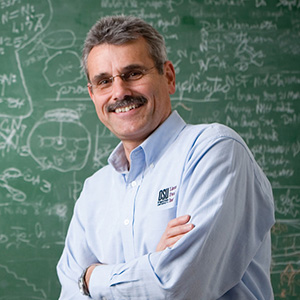

We bid farewell to Distinguished Professor in Biochemistry and Biophysics Balz Frei as he retires this month after leading the Linus Pauling Institute since 1997. Balz reflects on 20 years of progress: nutrition emerging as a “hard science” in human health. He outlined some key advances during that time and the steps still needed for nutrition researchers to work more closely and successfully with the medical community. We thank you for your outstanding service and wish you all the best, Balz!
Best wishes to Chere Pereira, who is retiring this month after 29 years at OSU! Her dedication and service to others has made a significant impact on generations of physicians, dentists and health professionals. She has a deep commitment to her students’ success, which is reflected in her passion. For instance, Chere created what became a tradition—the Pre-dental End of Year BBQ at Dr. Ken Johnson’s house, even baking tooth-shaped cookies for the students to decorate.
Class of 2017: Who are they?
This fall we will welcome 816 science students, a nine percent increase from last year. Here are some demographics on our newest class of scientists:
| 48.5% | High achieving |
| 40% | Minority students |
| 64.5% | Female |
| 35.5% | Male |
| 28% | Pell-eligible |
| 16% | 1st generation college student |
New Faces
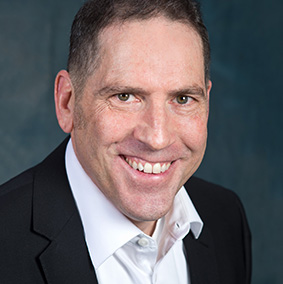

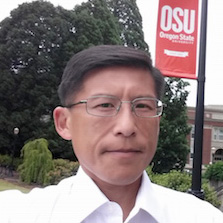

Welcome (from left to right) Matt Andrews, Heather Arbuckle, Tze-Yiu Yong and Chris Larson!
We welcome Matt Andrews from the University of Minnesota-Duluth as Associate Dean for Strategic Initiatives and Administration(1.0 FTE), effective August 16, 2016. He will help advance the educational, research, diversity and outreach mission of our College. Matt will provide leadership to faculty in developing policies and programs that improve student and faculty success. Matt will also develop, implement and evaluate short/long-range goals and objectives, streamline and implement our policies and procedures, monitor strategic metrics and budget, and generally assist with the administration and operations in our College.
Matt is currently a McKnight Presidential Professor and the founding director of the Bio-Translational Research Center at the University of Minnesota-Duluth. His research interests include genetic factors controlling mammalian hibernation. He completed his bachelor’s at the University of Michigan and his Ph.D. from Wayne State University School of Medicine in Detroit.
Dr. Andrews will give a public talk in the Department of Biochemistry & Biophysics on “Nature’s fat-burning machine: Brown adipose tissue in a hibernating mammal” July 12 at 1 pm in ALS 4001. Please join us and meet Matt Andrews.
We are conducting a search to replace the Associate Dean for Academic and Student Affairs position vacated by Julie Greenwood, who is the new Associate Dean for Undergraduate Studies within the Division of Undergraduate Studies and will have an impact on students across the university. Good luck, Julie! We will miss you.
Andrew Thurber has a new joint appointment in our College as an assistant professor in Microbiology in addition to the College of Earth, Ocean, and Atmospheric Sciences. He is part of a successful dual career hire; he is the husband of Rebecca Vega-Thurber.
The College welcomes back science alumna Heather Arbuckle as the new Head Advisor in our College. Once a Beaver, always a Beaver. Heather brings a wealth of experience—including working with students at community colleges—and a passion and commitment to student success and diversity. Her expertise working with transfer student populations will be invaluable.
Best wishes to Interim Head Advisor Tyler DeAdder, who has been promoted to a director in the College of Engineering. We are grateful to Tyler’s hard work and assistance during this transitional time in winter and spring terms. Good luck, Tyler!
Tze-Yiu Yong joined our College in April as Project and Event Manager. Tze will provide leadership in the areas of events as well as data analytics – both tactically (data collection, management and reporting) and strategically (goals, policies and procedures). He brings more than 20 years of project and program management experience at all levels.
Chris Larson is our new Director of Partnerships and Industrial Programs and responsible for building out capabilities to prepare career-ready students and post docs. By blending professional development curriculum, internship, and other experiential experiences with programs focused on building “T-shape” and “π-shape” students, we can dramatically increase student competitiveness and position OSU as the place to go to launch a career. Chris joins us from the University of Oregon where he served as the Senior Director of Industry Partnerships and Programs for the Graduate Internship Program for 10 years.
Our College has received a Scaled Learning Innovation Grant of $100,000 from the Office of Research for the proposal “Training to Bridge the STEM Professional Innovation Gap.” Chris will play a role in this effort, placing initial professional development modules for OSU’s Professional and Continuing Education. This will be an important part of our revenue model going forward.

RESEARCH EXCELLENCE
Funding
We have received $11 million in research funding through May. The College appreciates all of your hard work writing and submitting proposals that make such a significant impact through research and discovery. We are committed to helping all faculty secure funding and to providing better support for grant development. We heard the needs many of you have expressed for better grant support. In our pursuit of excellence, we anticipate growing our success rate on proposals and increase the quantity and quality of proposals submitted in the coming academic year.
Grant Development support: We hope the grant writing workshop we held this term was beneficial to you and that the training will increase the competitiveness and quality of your proposals.
Keep up the excellent work! Here are a few examples of our recent success:
- Malgo Peszynska was awarded a 3-year NSF grant of $123K for her project “Phase transitions in porous media across multiple scales.”
- Elisar Barbar is the single PI on a 5-year, $1 million NSF grant that will support our new NMR instrument to be installed this summer and the project, “Structural basis of phosphorylation and alternative splicing in dynein regulation.” This is in addition to the $1.3 million of NIH support already secured for the NMR.
- Chris Beaudry was awarded a 3-year, $130K NSF grant for his project, “Alkaloid Synthesis Using Aminal Radicals.”
- Michael Blouin is a co-PI on two, 1-year grants totaling $744K from the Oregon Department of Fish and Wildlife for a project titled, “Collaborative Fish Hatchery Research.”
- Steve Giovannoni received a 5-year $204K grant from the Bermuda Institute of Ocean Sciences for his project: “A Collaboration Program for the Study of Microbial Oceanography in the North Atlantic Subtropical Gyre.
- Jadwiga Giebultowicz (PI) and David Hendrix (co-PI) received a $216K NIH grant for a two-year study of Circadian regulation of neuroprotective genes during aging.
- Sandra Loesgen has been awarded a Research Equipment Reserve Fund (RERF) 2016 award of $56K from the Office of Research for her proposal “Preparative HPLC for the Purification of Complex Mixtures.”
- Peter Eschbach has been awarded a Research Equipment Reserve Fund (RERF) 2016 award of $43K from the Office of Research for his proposal “Ultra-Microtome.”
Research Highlights
I am proud of all of the recent discoveries and breakthroughs from our faculty. Below is a sample of our successes. Tell us about yours so we can share them and raise the visibility of Science!
Steve Giovannoni is the lead author of a new study in the journal Nature Microbiology that reveals how a certain class of microbes can regulate atmospheric temperatures and help in the formation of clouds over the world’s oceans. What the research team and others have established is the evolutionary box of tricks that makes planetary chemistry on such a prodigious scale possible.
Steve is a corresponding author on a study that revealed SAR11, the most abundant plankton in the world’s oceans, are pumping out massive amounts of two sulfur gases that play important roles in stabilizing the Earth’s atmosphere.
Tory Hagen’s new study hopes to answer a long-overdue question does the use of multivitamin supplements really improve the nutritional status of elderly adults.
Part of an international team of 70+ mathematicians from 12 countries in more than a dozen research areas since 2010, Holly Swisher and the team recently published a massive online database that lays the foundation for mathematics of the 21st century. The mathematical database, called L-functions and Modular Forms Database (LMFDB), catalogs objects of central importance in number theory and maps out the intricate connections between them. By coordinating efforts, the researchers have made these relationships visible by developing new algorithms and performing calculations on an extensive network of computers.
Mas Subramanian’s blue pigment, YInMn, has long garnered worldwide attention since its discovery in 2009. But now it has art restorers calling. Recently, YinMn was added to the Forbes Pigment Collection at the Harvard Art Museums, which serves as the world history of color with pigments dating back to the Middle Ages. The pigment was featured recently in Tech Insideronline and in video, which has gone viral, reverberating across the Internet with several million shares. YinMn is everywhere from Cosmopolitan to Huffington Post and The Daily Mail.
Co-principal investigators Juan Restrepo and Alix Gitelman are leading a collaborative effort with researchers across OSU that received $3 million to implement an NSF Research Traineeship at OSU. Enrique Thomann and Ed Waymire are core members of the team. The proposal, “Risk and uncertainty quantification in marine science and policy,” will prepare a new generation of natural resource scientists and managers to study, protect, and manage ocean systems. NSF chose OSU to develop the program, which focuses on the use of “big data” to analyze and understand the effects of human activities and climate change on the ocean system worldwide.
Jane Lubchenco, Bruce Menge, Francis Chan and other researchers released a paper on the unprecedented number of juvenile sea stars recently observed off the Oregon coast – just two years after one of the most severe marine ecosystem epidemics in recorded history.
Tom Dick received a $1.39M, 6-year NSF grant for a Noyce Teaching Fellows project to provide support for 16 teaching fellows to complete a master’s degree program in secondary mathematics or science education at OSU. The project also provides teaching fellows with professional development and support their first four years of teaching in high needs schools.
Tom Sharpton’s new study suggests that triclosan, an antimicrobial and antifungal agent found in many consumer products ranging from hand soaps to toys and even toothpaste, can rapidly disrupt bacterial communities found in the gut. The story was covered by TIME magazine.
Virginia Weis recently received a three-year NSF grant for $583K to examine the role of the coral immune system in managing and communicating with its symbionts. She is collaborating with OSU chemist Sandra Loesgen to identify molecules that participate in interpartner communication and with Boston University biologist Tom Gilmore. By gaining a deeper understanding of animal-microbe interactions in an ancient relative of higher animals, the researchers hope to enhance understanding of the evolution of the immune system.
Rebecca Vega-Thurber’s latest study published in Nature Communications reveals how coral reefs are declining around the world due to a combination of factors, including overfishing, nutrient pollution, and pathogenic disease, ultimately becoming deadly as a result of higher ocean temperatures.
Marine biologist Su Sponagule was PI on a study that sequentially sampled tropical fish from their larval stages to their settlement in reefs, confirming the critical role of these oceanographic features. The study was published in Proceedings of the National Academy of Sciences (PNAS).
Andrew Thurber recently published a study revealing that the hydrothermal vents and methane seeps on the ocean floor, once thought to be geologic and biological oddities, are now emerging as a major force in ocean ecosystems, marine life and global climate.
Francis Chan is co-chairing a 20-member panel of leading West Coast ocean scientists who presented a comprehensive report recently outlining a series of recommendations to address the increase in ocean acidification and hypoxia. The report urged the governments of Oregon, California, Washington and British Columbia to take actions now to offset and mitigate the effects of global carbon dioxide emissions.
David Lytle and a team of researchers published a study in BioScience that “hydropeaking” of water flows on many rivers of the West has a devastating impact on aquatic insect abundance, with a loss of biodiversity that is comparable to polluting the rivers with toxic chemicals. This raises serious questions current practices of raising river volumes up and down daily to meet hour-by-hour electricity demand.
Bruce Menge recently found an unprecedented surge of baby sea stars, mostly ochre sea stars, at nine study sites in Oregon. In most of the areas, that meant around 300 times as many babies as in previous years. His finding was featured in National Geographic.
George Poinar, Jr. published a new analysis of the prehistoric origin of malaria suggesting it evolved in insects at least 100 million years ago, and the first vertebrate hosts of this disease were probably reptiles, which at that time would have included the dinosaurs.
Staci Simonich and her team recently discovered that pavement sealcoat products used widely around the nation on thousands of asphalt driveways and parking lots are significantly more toxic and mutagenic than previously suspected, according to their new paper published in Environmental Science and Technology Letters.

CONGRATULATIONS
Promotions & Tenure
The College of Science is proud to congratulate 15 faculty for receiving promotions and/or tenure for the 2015-16 academic year. Congratulations! You all have earned well-deserved pats on the back. Special thanks to our College of Science Promotion and Tenure Committee for devoting a significant time engaged in the intense review process.
Scholarships
College of Science awarded more than $770,000 in scholarships and awards to 272 current science students for merit, need and undergraduate research experiences for the 2016-17 academic year. The university awarded $2.95 million—a 52% increase over last year—to 806 incoming freshmen in the College of Science. In aggregate, 903 science students—a 25% increase from last year—received more than $3.7 million, a 42% increase over last year, in scholarship awards, which includes departmental, college and university awards.
Note: Some students received scholarships from multiple sources (i.e. both departmental and College of Science or departmental and OSU).
The 2016 SURE Science program awarded 30 students scholarships a total of $165,000 to conduct research this summer. We are thrilled to have been able to fund 20% more students more students this year thanks to generous philanthropic contributions from friends and alumni of the College to our Undergraduate Research Frontiers Fund. We were able to award 33% of SURE Science scholarships to underrepresented minorities this year, extending the power of transformative research experiences and make a difference in their education!
Due to the Oregon legislature’s new process of awarding aid first to students with the greatest financial need, many of our current students were surprised by their reduced financial aid Package for the next academic year. OSU was able to craft a quick solution for these students to cover the imminent shortfall by developing the High Promise Scholarships for rising sophomores next academic year. These $1,000 scholarships are jointly funded by one donor’s incredible generosity and the colleges.
Our College was able to assist 25 science students of OSU’s 100 students affected by the changing legislation; students will receive $500 each plus a $500 donor match.
Honors & Awards
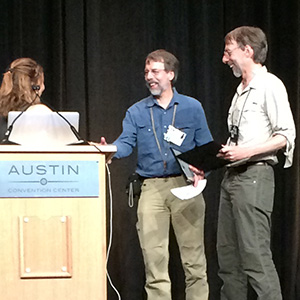
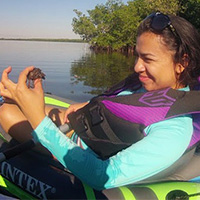
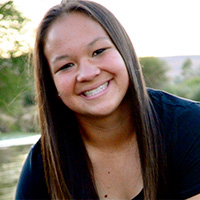
Some of our amazing faculty and students: David Madddison and twin brother Wayne, Stephanie Rosales and Cassandra Lew
Congratulations to these three science faculty who were honored by the Oregon Academy of Science for their outstanding contributions to science and higher education in science and mathematics: Mas Subramanian, Tevian Dray and Corinne Manogue. Mas received the 2016 Outstanding Scientist Award, and Tevian and Corinne were honored with the 2016 Outstanding Educator in Science and Mathematics, Higher Education Award.
Kudos to Paul Ha-Yeon Cheong, who has been named the inaugural Bert & Emelyn Christensen Professor in the Department of Chemistry! Paul joined OSU’s College of Science in 2009 as an associate professor. The Bert and Emelyn Christensen Professorship provides faculty support in the Department of Chemistry and helps retain talented faculty in organic chemistry.
Congratulations to Xiulei (David) Ji, who has been granted a five-year $530K NSF CAREER Award for his project, “Carbon Anodes in Potassium-Ion Batteries.”
Congratulations to David Maddison who was honored with the Society of Systematics Biology’s prestigious Presidents’ Award for Lifetime Achievement recently along with and his twin brother Wayne Maddison, a professor in the departments of zoology and botany at the University of British Columbia. It must run in the family!
Distinguished University Professor Jane Lubchenco received the 2016 Linus Pauling Legacy Award, the ninth winner of the prestigious award; several of the previous recipients were Nobel Prize winners. The award recognizes outstanding achievement in a subject of interest to Linus Pauling.
A total of five science Ph.D. students have received prestigious National Science Foundation Graduate Research Fellowship Program (NSF GRFP) awards this year! Biochemistry and Biophysics student Nathan Waugh and Integrative Biology students Shannon Hennessey, Jack Koch, Zach Randall and Michael Brawner are among 11 students at Oregon State to receive the NSF Graduate Research Fellowships this year.
Chong Fang was named an Action Research Fellow by the ESTEME@OSU, Enhancing STEM Education at Oregon State University. The project is focused on increasing the use of evidence-based instructional practices (EBIPs) to enhance the effectiveness of STEM classes.
Kudos to advisor Chere Pereira, who was awarded the National Association of Advisors for Health Professions’ inaugural Carol Baffi-Dugan Award for Service! She was nominated for this leadership award by her peers from 13 states in the western region.
Our College is proud of our graduate students who earned the Graduate Certificate in College and University Teaching (GCCUT) through the Graduate School: Trevor Tivey (zoology), Sarah Erickson (mathematics), Emerald Stacy (mathematics) and Chelsea Holman (Biochemistry and Biophysics! GCCUT is an 18-credit certificate program offered over the course of two years that enhances teaching skills through advanced coursework and experiential learning opportunities.
From music and dancing to research in Italy: Biochemistry and Biophysics student Arianna Kahler-Quesada did summer research in a green synthetic organic chemistry laboratory in Perugia, Italy.
Congratulations to Hayati Wolfenden, a Biochemistry & Biophysics senior, who took top honors at the 2016 Celebrating Undergraduate Excellence competition for her research: “Site-specific Modification of Glucose Proteins Enabling Precise Surface Orientation for Glucose Sensors.”
Two science students received a Goldwater Scholar Honorable Mention: Arianna Kahler-Quesada and Brian Josephson, both Honors Scholars majoring in Biochemistry and Biophysics. Excellent!
Microbiology doctoral student Stephanie Rosales will spend two months in Nepal on an NSF Graduate Research Internship Program (GRIP).
Cassie Lew, a junior chemistry major and research assistant in Sandra Loesgen’s lab, was recently awarded the prestigiousDAAD RISE (Research Internships in Science and Engineering) fellowship to conduct research this summer in Germany.
Our College is thrilled that the ARCS Foundation Portland Chapter has funded four of our graduate students this year: Dallas Foster, Mathematics; Shannon Hennessey, Integrative Biology; Bryce Penta, Microbiology; and Gisela Abigail Gonzalez-Montiel, Chemistry.

VISIBILITY
If you have not already seen it, please check out our spring issue of iMPACT, our alumni magazine, which highlighted our expertise in biohealth science.

STRATEGIC PLANNING
As you know we launched our 2015-2020 strategic plan, LEAD: Learn, Engage, Achieve, Discover – a path to global excellence, this year. Several of the Working Group have submitted reports. Please send any feedback to the chair of each Working Group.
Distance Education Working Group, chaired by Mike Lerner. Their goals were to analyze current offerings in our College and to identify those with highest impact for development; and to recommend policies and procedures that will incentivize faculty to create distance education courses and programs.
Data Science Working Group, Chaired by Lan Xue. Their goals included:
- To Develop a research hub in data sciences that is 1) a source for fundamental research and 2) serves the needs of data analytics research (precision medicine, precision agriculture, bioinformatics, educational research, business analytics, UAS, etc.) at OSU;
- To develop graduate programs, certificates and workshops that address workforce needs in data analytics in Oregon and around the world
- To develop Baccalaureate Core or other courses and programs in statistical, mathematical and computational sciences to prepare undergraduate students in science and other programs to be better trained for a computational and data-enabled world.
Diversity Working Group, chaired by Dee Denver. Their goals were to develop and implement programs and partnerships to recruit and retain graduate students from underrepresented groups; and to recommend ways to enhance professional development for students, advisors, faculty, and staff in support of diversity and inclusion, being mindful of programs already developed and offered by OSU.
Commitment to diversity: In June 2015, the Faculty Senate passed language to include in all position descriptions regarding diversity, equity and inclusion. Based on this, all College of Science faculty position descriptions will now include this language as well as additional language that recognizes faculty efforts to enhance the diversity of our community of OneScience. There are also examples of activities and metrics to measure our impact in this important area on the OSU ADVANCE website and the College of Agricultural Sciences website.
To advance goal 1 of our Strategic Plan—to build a diverse and inclusive science community focused on excellence, we launched several marketing initiatives to proactively recruit high achieving students. This addressed our relatively flat enrollment growth for the past five years. We devised two new strategies: a digital marketing campaign to prospective high achieving students, their parents and influencers in the region (Oregon, Washington, Idaho and California), and collaborated with the Office of Admissions’ who hand-delivered care packages to Presidential Scholar awardees who had not yet accepted the offer.
The digital media campaign, called “Why Science is Better at Oregon State,” ran on mobile apps March 21-May 5, 2016. It used multi-channel/multi-device targeting in partnership with the Oregonian Media Group, owned by Advance Digital, the eight largest media company in the country. It served up ads to high-achieving STEM students from top West Coast high schools based on the types of content and subject matter they were likely to consume.

The campaign was extremely successful in advancing one outcome of our Strategic Plan: to recruit high-achieving students to our College.
- The campaign resulted in nearly three times as many clicks as the national average and left nearly one million impressions.
- The campaign yielded 79% more science students than last year in the Honors College—the largest percentage increase in years! Our College now presents nearly a third of the Honors College, up from about a quarter last year.
- Our yield for science students in the Honors College increased 10%.
- Our applicant pool to the Honors College increased 22% from last year.
- Our efforts substantially contributed to the Honors College admitting its largest cohort in history: 366 students!
The Office of Enrollment Management developed Beaver Care Packages, which offered a very personal, high-touch point to high achieving students. The bright orange box, which included a College of Science mug, T-shirt, backpack, stationery and other items, was delivered directly to the student during class on a school day. The efforts resulted in nearly 30 more high achieving students.

BUDGET & FUNDRAISING
In the past five years, our College has seen steady growth in key areas: number of degrees awarded and faculty recruitment. Since FY2012, the number of bachelor’s degrees we have awarded has increased 34%. Our faculty ranks have increased steadily as well. We hired 41% more teaching faculty, based on ASBC reports. We increased our tenure/tenure-track faculty by 8.2%, based on FY 2015 data from the OSU Office of Institutional Research. All wonderful news for our College!
In terms of our overall budget, the College’s 2017 fiscal year budget will grow slightly due to our successful dual career, TFDI, and Provost Hiring Initiative hiring, despite a 0.5% budget hold back centrally. We have seen a significant growth in our ecampus revenue this year. Keep up the excellent work!
Provost’s Faculty Match Program
This month the Provost’s Office announced the OSU Faculty Scholars for Teaching Excellence program, which is designed to support excellent teaching and learning innovation that advances retention and completion goals through the strategic use of new endowed faculty positions. The endowed faculty position funds must be tied directly to supporting outstanding teachers whose work will advance OSU’s student success goals.
The program will support 10 Faculty Scholar positions for three-year renewable terms. Initially, the program will be limited to one Faculty Scholar for each academic college with undergraduate students plus one at OSU-Cascades, for a total of 10. A donor commitment of $250,000 will initiate a Faculty Scholar Fund for Teaching Excellence. These funds have not been secured yet.
Our College is working to raise the $250K as soon as possible, hopefully well before the February 2017 deadline. If colleges are unable to raise funds for the Faculty Scholar position, then it may go to another college who has raised the necessary funds.
The focus of these awards is to advance undergraduate student success and to inspire the development and dissemination of innovative, research-based strategies that engage students and increase retention and completion. The program was designed by the OSU Foundation and the Divisions of Academic Affairs and Undergraduate Studies.
Fundraising tops $5 Million
We had a record year, raising more than $5 million in gifts from our generous alumni and friends. We exceeded our goal by 155%! Last year, we also exceeded our goal. Our College has raised $9 million in the past two fiscal years! This represents an exceptional job by Development Director Anne Murphy and our friends at the OSU Foundation.
In addition, we greatly appreciate the department heads, faculty and students who have been doing a tremendous job stewarding our donors and enhancing our relationships with alumni and friends. Keep up the excellent work!
OSU is having another superb year with fiscal year gift totals. They exceeded their fundraising goal of $101 million for fiscal year 2017 in April! They have set a new goal and are focused on reaching of $122 million by the end of the fiscal year in a few weeks. The 3-year average for giving through April 30 is $89.7 million. The OSU Foundation attributes this momentum to the success of our Strategic Fundraising Initiatives and our Strategic Plans.

EVENTS
The Department of Integrative Biology held the inaugural Robert M. Storm Distinguished Lecture featuring Edmund “Butch” Brodie, a professor of biology at Utah State University. Dr. Brodie gave a scientific talk, “Arms races, the evolution of tetrodotoxin resistance” March 11. The Storm Lecture Series was recently created by zoology alumnus Bill Lovejoy (Ph.D., ‘72) to promote excellence, advancement and inspiration in biology, particularly vertebrate zoology, for the OSU and the Corvallis communities.
The Mathematics Department hosted the 2016 spring meeting of the Pacific Northwest MAA section in April along with the 8th annual Northwest Undergraduate Mathematics Symposium (NUMS) within the MAA conference. Kudos to our faculty who were part of the local organizing committee: Nathan Gibson (Local Arrangements Coordinator and founder of the NUMS conference), Tom Dick, Tevian Dray, Elise Lockwood and Holly Swisher (Project NExT local coordinator).
The College was a sponsor of the 2016 Mi Familia Weekend, a series of bi-lingual events to make OSU accessible to families from Spanish-speaking countries and to educate them about the university so they can take pride in their son or daughter’s hard work and achievements.
The College hosted a successful Field Trip and Scholar Awards Luncheon for the ARCS Foundation Portland Chapter to our John L. Fryer Aquatic Animal Health Lab April 7. Thanks to Center Director and head of the Microbiology Department Jerri Bartholomew and Anne Murphy, our Development, Director, for their hard work for many months to organize the visit and ensure its success. ARCS Foundation of Portland’s purpose is to support doctoral students in the fields of science, engineering and medical research.
In April, the College held its 2016 Spring Distinguished Lecture, featuring Shirley Malcom, Head of Education and Human Resources Programs for the American Association for the Advancement of Science (AAAS). Dr. Malcom discussed “Diversity and Inclusion: Grand Challenges for Science and Engineering.”
Dinner and a movie and a discussion: In May, the College treated mathematics, physics and statistics students and faculty to the movie, “The Man Who Knew Infinity,” the recently released biographical film about Indian mathematical genius Srinivasa Ramanujan followed by dinner and a special Skype discussion with OSU alumnus and internationally recognized mathematician George Andrews (BS, MS ’60). Andrews, who is the Evan Pugh Professor of Mathematics at Pennsylvania University and a member of the National Academy of Sciences, is perhaps best known for his work on Ramanujan’s “Lost Notebook” as it is called in the mathematical community.
Biochemist Peter Walter presented the 2016 Tsoo King Lecture, which is hosted by graduate students in the Department of Biochemistry and Biophysics. Dr. Walter is an HHMI investigator and Distinguished Professor of Biochemistry and Biophysics at the University of California, San Francisco.
Our faculty were busy presenting several Science Pubs in Corvallis and Beyond. Chemistry faculty Mas Subramanian presented a talk on Pigments in Bend, organized by OSU Cascades campus, his fourth Science Pub talk in Oregon! Microbiology facultyTom Sharpton discussed gut microbiomes and Rebecca Vega Thurber discussed coral microbiomes both at Old World Deli in Corvallis.
Physics alumnus and Northwestern University astrophysicist Shane Larson (BS, ’91) discussed his career and his work on the LIGO project with science students April 12 as part of ScienceSpeak, a career development series sponsored by the Office of Career Development and the College of Science. Larson is a member of the Laser Interferometer Gravitational Wave Observatory (LIGO) Scientific Collaboration, which on September 14, 2015, detected gravitational waves for the first time, proving Einstein correct after 100 years.
In addition, Larson presented a special Science Pub, “Black Holes & Gravitational Waves: LIGO’s New View of the Cosmos,” discussing one of the most important physics discoveries of the century to a packed house at Olde World Deli.
The College of Science presented the 2016 F.A. Gilfillan Memorial Lecture featuring physics professor and Dr. Russ and Dolores Gorman Faculty Scholar Janet Tate who presented, “It’s a Materials World.” Tate discussed the fascinating world of transparent conductors and superconductors and illuminated the surprising and contradictory properties of these materials that are transforming our lives and our economy.
The College of Science welcomed renowned mathematician Richard Tapia, a University Professor in Rice University’s Computational and Applied Mathematics Department. A tireless advocate of underrepresented minorities in the sciences, Tapia presented a special lecture on diversity for STEM leaders and faculty across campus May 11. Born in Los Angeles to parents who emigrated from Mexico, Tapia shared his journey from first generation college graduate to 2011 National Medal of Science award winner. The former drag racing champ also presented a general talk entitled, “Using Mathematics to Enhance My Personal Life.”
The Department of Physics’ annual Yunker Lecture featured Meg Urry, the Israel Munson Professor of Physics and Astronomy at Yale University, on May 17. Dr. Urry gave a talk about “Black holes and the evolving universe.”
Dr. Tapia presented the Mathematics Department’s 31st Annual Lonseth Lecture May 10 in conjunction with the annual Mathematics Awards. His scientific talk, “The Remarkable Journey of Isoperimetric Problem: From Euler to Steiner to Weierstrass,” offered an overview of the history of the impactful isoperimetric problem. Thanks to Juan Restrepo for his hard work in organizing Dr. Tapia’s visit to our campus to meet with so many members of OSU leadership, faculty and students.
Charlotte Wickham in the Department of Statistics helped bring the American Statistical Association’s Datafest, a nationally coordinated data analysis competition, to OSU for the first time April 15-17. Undergraduate and graduate students worked under pressure as part of a team and examined their own critical thinking processes with help from a cadre of roving consultants, comprising graduate students, faculty, and industry professionals. Statistics and biochemistry/biophysics students had a strong showing!
The Department of integrative Biology recently hosted a Learning Assistant Workshop in May that attracted people from throughout Oregon. Learning Assistants (LAs) are undergraduates trained in pedagogy and peer facilitation that help faculty implement active learning in their courses. At this Workshop, they trained more than 20 new Las in three courses: Principles of Biology, Process Data Analysis and General Physics. Kudos to Lori Kayes, Devon Quick, and KC Walsh, who facilitated the workshop!
There are already 25 LAs in the courses Introductory Human Anatomy and Physiology, Advanced Human Anatomy & Physiology, Paleobiology, Vertebrate Biology, and General Physics. For instance, in the Paleobiology course, Rebecca Terry has taken incredible steps to incorporate OSU’s recently discovered mammoth bones into her classroom. Students presented their work publicly and reported on progress on their blog. Students learned and practiced techniques that actual paleontologists perform. Together this impacts more than 2,500 students at OSU!
The College of Science celebrated our outstanding scholarship students at our annual spring Scholarship Dessert in June. For the 2016-17 academic year, the College awarded 211 scholarships for merit, need and undergraduate research experiences. The Scholarship Dessert connected students, their families, advisors, faculty and alumni/friends whose generous support funds these awards. This year two scholarship recipients spoke, senior chemistry major Shan Lansing integrative biology alumnus Jackson Dougan (’13), the biological data scientists and former U.S. Youth Observer to the United Nations offered a unique perspective on global issues from climate change to LGBT rights.
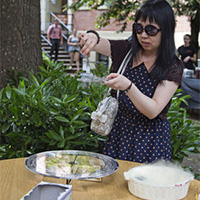

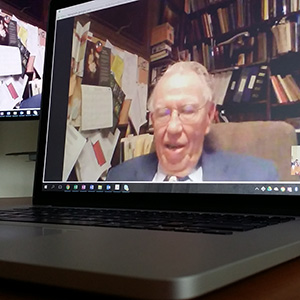
We hope you enjoyed our events: Chemistry is Awesome, Astronomy Open House and Dinner + Movie = Discussion
The Department of Chemistry held its 3rd annual CIA Party(“Chemistry is Awesome!”) June 3. The event celebrates the fun of chemistry and attracts students, faculty and anyone who has ever take a chemistry course to an outdoor party with chemistry demos, live music, poster session and a dunking booth for any end-of-term stress relief.
In a galaxy far, far away, actually just on the rooftop of Weniger Hall, the Department of Physics drew hundreds of people to its first Astronomy Open House. New astronomers could immerse themselves in the wonders of outer space by gazing up at spectacular views of the Moon, Jupiter, Saturn and other objects in the sky from the rooftop using Physics’ telescopes!
The College of Science Student Advisory Committee hosted the annual Science Fair and Study Break featuring Voodoo Doughnuts from Portland June 3 as well as quirky science games, prizes and science student organizations. The event drew nearly 800 students, faculty and staff!
Save the Date
August 18-21 – The 2016 International Indian Statistical Association Conference, hosted by the Department of Statistics, will bring together statisticians worldwide from academia, industry, government, and research institutes. We will have more than 200 visitors to our campus.
September 12– Coffee with Your College event at the Graduate School’s New Graduate Student Orientation, 12:30 to 1:30 pm, La Sells Stewart Center. There will also be a College of Science table at the Welcome Barbecue 5:30 to 7 pm at the Student Experience Center Plaza.
September 20 – Fall Welcoming Ice Cream Social hosted by the College of Science Student Advisory Committee, 1-3 pm, outside Kidder on the Library quad. Welcome new science students into our community!
October 17 – 2016 College of Science Faculty and Staff Awards
November 21 – College of Science Fall Distinguished Lecture featuring Carl Wieman, Nobel laureate and Stanford University physics and education professor.

NEWS
The Oregon State University Microbiome Initiative
Congratulations to Tom Sharpton, who received $20K in funding from OSU’s Office of Research as well as support from our College for, “The Oregon State University Microbiome Initiative” (OMBI), a transformative program for Science and the OSU campus.
Tom and a team of scientists from six colleges have proposed OMBI to advance fundamental understanding of how microbiomes and their environments interact. The researchers will develop a foundation of scientific knowledge that the research community can build upon to advance new ecological and evolutionary theories and to enhance sustainability. Doug Keszler will be working with Tom throughout the summer to generate additional support.
This spring, Tom was invited to the White House to participate in the U.S. National Microbiome Initiative program announcement hosted by the Office of Science and Technology Policy.
The OMBI team spans multiple disciplines from microbiology, biochemistry, chemistry and public health to statistics, computer science and mathematics. Aligned closely with NMI goals, the team seeks to:
- Build collaborations to secure federal and foundation research grants
- Train and mentor junior scientists
- Communicate results and opportunities to the public, industry, and policymakers
Spark: A Year of Art + Science @OSU
The Division of Art and Science is hosting a year of inspirational events, partnerships and collaborations that celebrate and elevate the powerful interplay of art and science, and their critical relationship to each other and to others at OSU. The urgent problems of today and tomorrow demand the spark of inspiration that comes from joining the interdisciplinary methods of the arts and sciences, and we are excited to offer our talent, insight, and support!
The year-long series of special events will celebrate the blending and blurring of boundaries between art and science at OSU throughout 2016-2017.Participating units include the Colleges of Liberal Arts, Science, Education, Honors College and the OSU Library and Press with support from Outreach and Engagement. The College of Science Idea Team has proposed an exciting list of science events with input from across our College. The initial calendar will be announced later this summer at a launch event. Events have already begun [read about “Art meets Science on the Pacific,” where an art student went on a research vessel with our students last week] and will continue to the solar eclipse in the summer of 2017.
One of the signature events for science is the Microbiome project coordinated by Microbiology Department Head Jerri Bartholomew. This ART:SCIENCE show, “MICROBIOMES: To See the Unseen” is a will be an exhibit inspired by microbiology research and research methods in collaboration with the Corvallis Art Center April 2017. The exhibit will showcase artwork that makes connections between the science of microbiology, and how microorganisms are at the foundation of life.
New Academic Programs
New Major: Biochemistry and Molecular Biology
We are creating a new degree program, Bachelor of Science in Biochemistry and Molecular Biology, which will be housed in the Department of Biochemistry and Biophysics. Pending final approval by the Oregon State Board of Higher Education, the major will launch in the fall. Students in-depth training in molecular and computational biology to students. Students will gain in-depth understanding of the biochemistry of living systems and the techniques to be successful in a wide variety of careers as modern molecular biologists. The revolution in molecular biology in the past 40 years has been spectacular, bringing major advances in understanding the molecular mechanisms supporting living cells and the development of therapies to promote health, combat disease and improve quality of life.
Data Analytics programs to launch this fall
The College is launching an online-only Master of Science in Data Analytics and a Graduate Certificate in Data Analytics, both housed in the Department of Statistics. Both will launch in the fall pending final approval by the Oregon State Board of Higher Education. The programs respond to an increasing demand for new approaches in data management and data analysis to more effectively deal with “big data,” the torrent of information that is proliferating by clicks, likes, purchases, posts, tweets, uploads and a multitude of online and digital behavior. Both programs offer students more applied coursework, where students will learn how to use tools to manipulate, analyze and visualize large data sets. This contrasts with the M.S. and Ph.D. Statistics Programs, which include more mathematical and theoretical coursework for developing new statistical methods.
The master’s program is multidisciplinary with courses in both statistics and computer science, with concentrations in Health Analytics and Statistics to provide students with data analytic skills applicable in biology and health professions.
